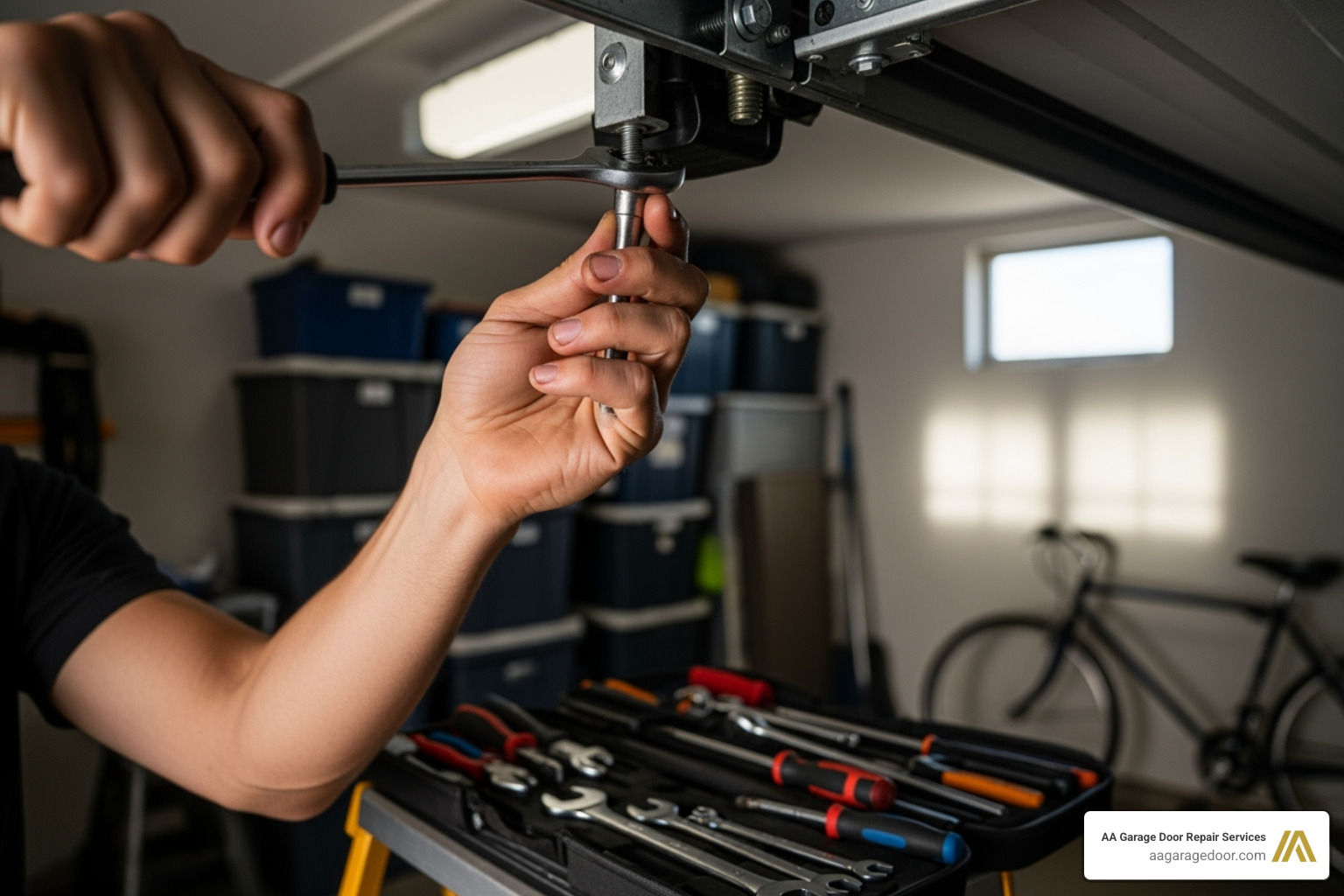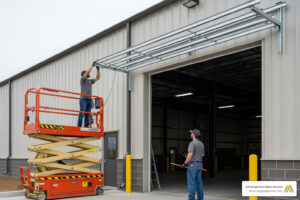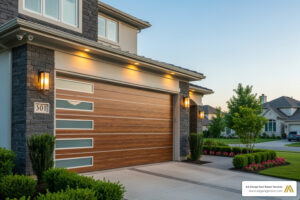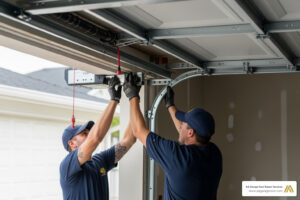When Your Garage Door Won’t Cooperate: Quick Solutions at Your Fingertips
Learning how to fix garage door at home can save you time and money. Many issues have simple causes that don’t require professional intervention, but for complex problems in the Twin Cities area, our garage door repair services offer 24/7 emergency support. This guide will help you identify which tasks you can safely handle and when it’s time to call an expert.
Quick DIY Fixes:
- Clean and align safety sensors
- Tighten loose nuts and bolts
- Lubricate moving parts
- Check remote batteries
- Clear track obstructions
Call a Professional For:
- Broken springs or cables (high tension = serious injury risk)
- Bent tracks or damaged panels
- Motor/opener malfunctions
My name is David Sands, owner of AA Garage Door LLC. With over 23 years of experience, I’ve seen that most garage door problems fall into predictable categories. My goal is to give homeowners the guidance to address these issues safely while knowing when professional help is essential.
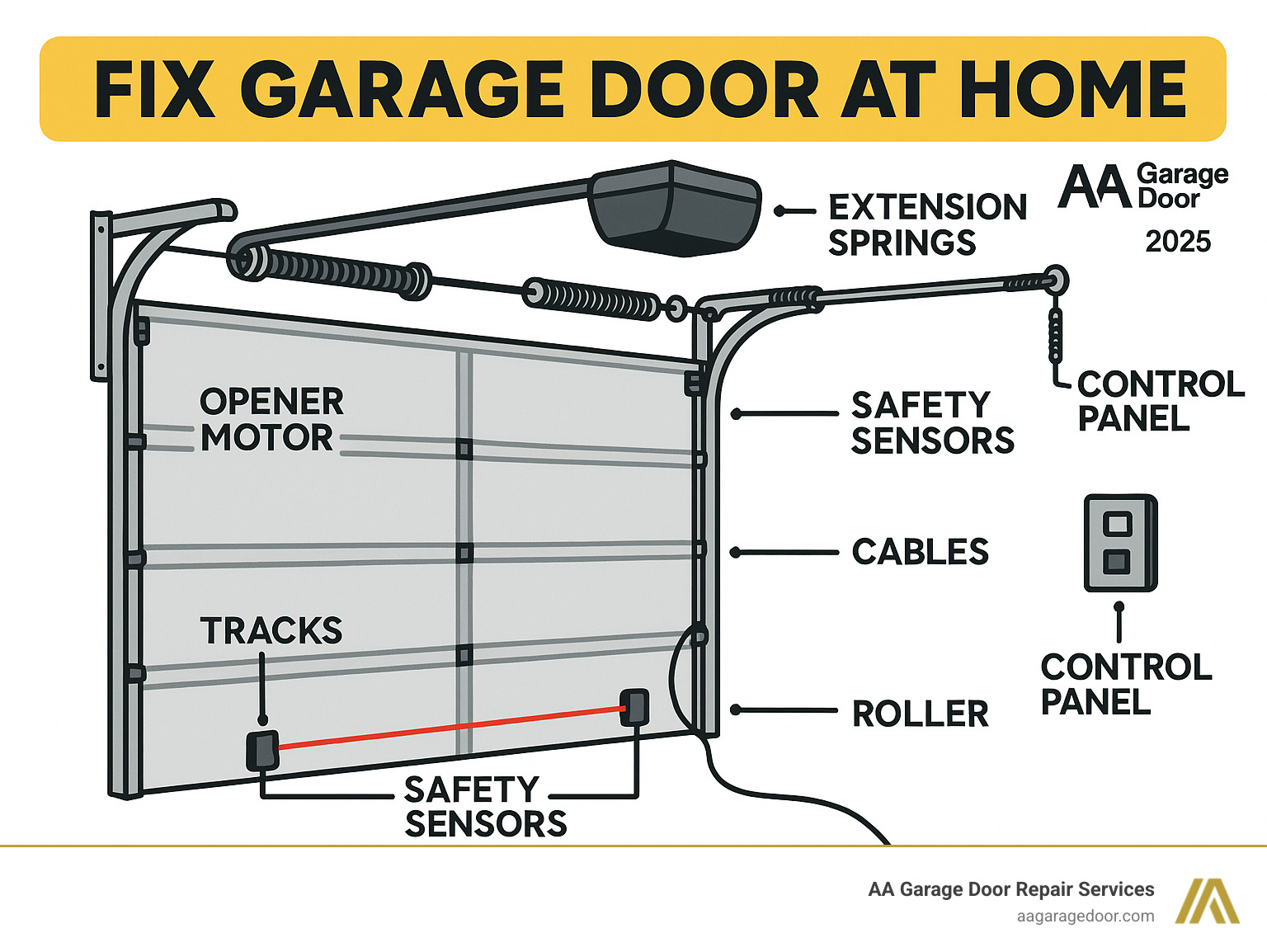
Safety First: Is It Safe to Repair a Garage Door Yourself?
Before you fix garage door at home, understanding the risks is critical. A garage door is a heavy, powerful machine that can be dangerous if not handled with respect.
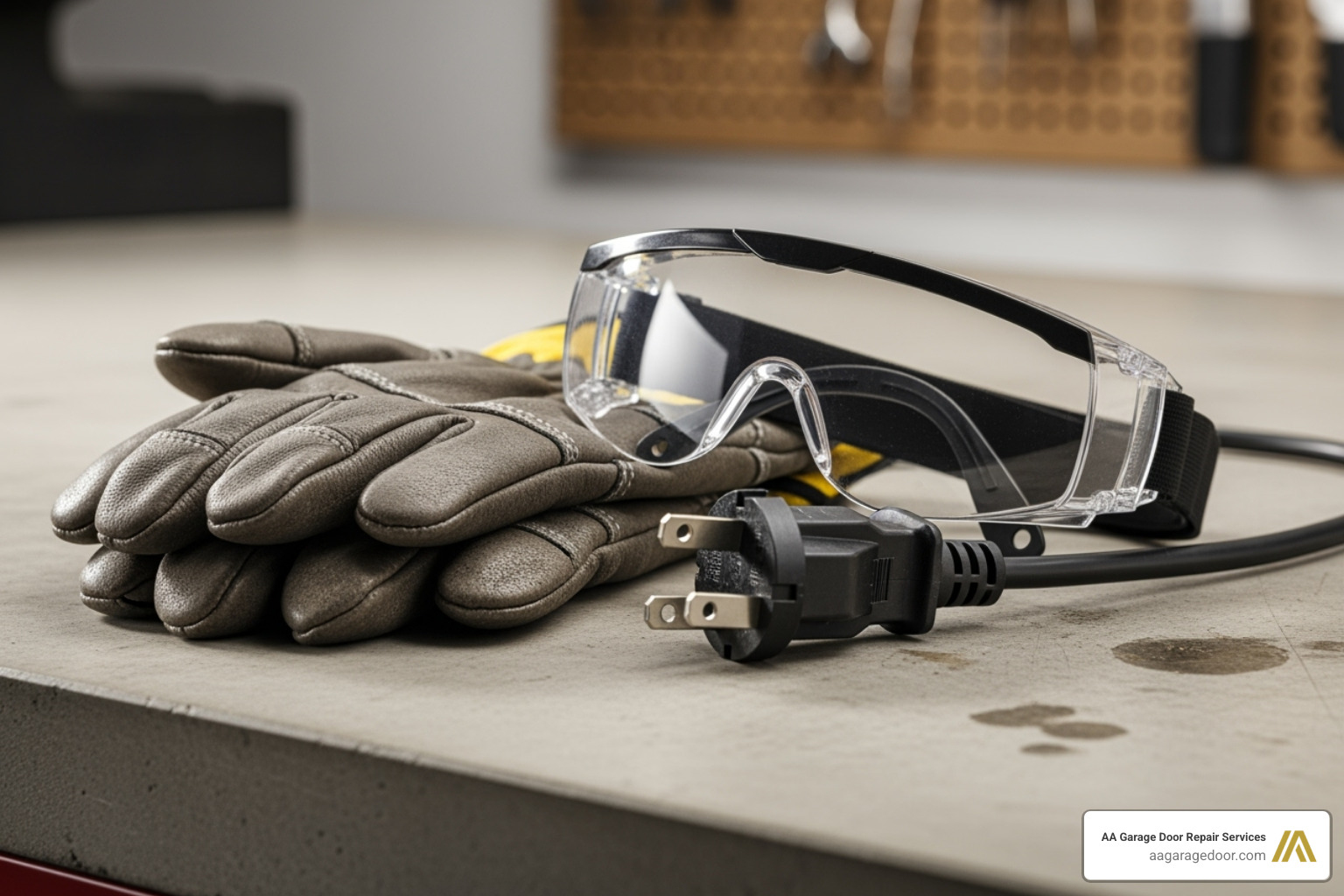
The golden rule is to always disconnect the power first by unplugging the opener or flipping the circuit breaker. This prevents the door from activating unexpectedly while you work.
The most significant dangers come from high-tension springs and cables. These parts are under immense pressure to lift a door weighing hundreds of pounds. If they snap or are mishandled, they can release violent force, causing severe injury. The weight of the door itself is also a hazard; never work under a partially open door without proper bracing.
Always consult your owner’s manual for model-specific safety warnings. For more information, see our garage door safety tips and the guidelines from the Door & Access Systems Manufacturers Association.
DIY-Friendly Repairs
Many common problems are safe for homeowners to address:
- Tightening loose hardware like hinges and track brackets.
- Lubricating moving parts to reduce noise and wear.
- Cleaning and aligning safety sensors.
- Replacing the bottom weather seal.
- Troubleshooting the remote control.
Repairs to Leave for Professionals
Some jobs are too dangerous for DIY and require an expert. Always call a professional for:
- Broken spring or cable replacement: These parts are under extreme tension.
- Severely bent tracks or damaged panels: These affect the door’s structural integrity and balance.
- Opener motor repair: This involves complex electrical components.
Attempting these repairs without training can be costly and dangerous. For a detailed breakdown, see our guide on 3 Garage Door Repairs Best for the Professionals.
Troubleshooting 101: How to Diagnose a Garage Door That Won’t Open or Close
When your garage door won’t cooperate, don’t panic. Most of the time, when you need to fix garage door at home, the problem is simple. Before calling for help, run through these quick diagnostic checks.

Start with the basics:
- Power Supply: Is the opener plugged into a working outlet? Check the circuit breaker or fuse box.
- Manual Lock: Ensure the manual slide lock on the inside of the door isn’t engaged.
- Remote and Keypad: Replace the batteries. If the wall switch works but the remote doesn’t, you’ve isolated the problem.
- Emergency Release: If the door is stuck closed, you can pull the red emergency release cord (only when the door is fully down) to open it manually.
For a deeper dive, see our guide on 10 Reasons Your Garage Door Isn’t Working Properly.
Checking the Safety Sensors
If your door starts to close and then reverses, the safety sensors are the likely cause. These “electric eyes” are located about six inches from the floor on either side of the door opening.
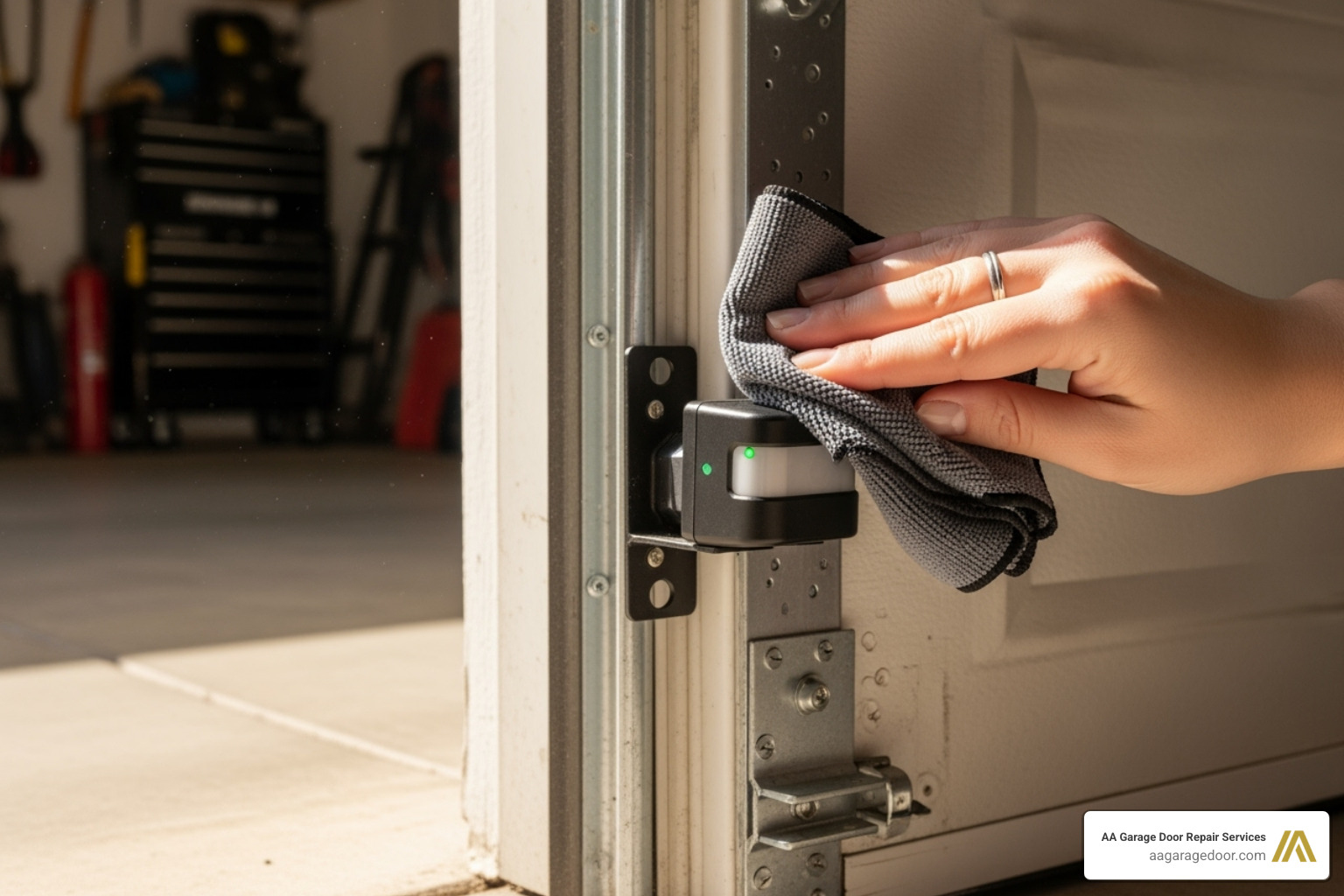
- Check for Obstructions: Clear away any debris, cobwebs, or leaves blocking the sensor path.
- Clean the Lenses: Gently wipe the sensor lenses with a soft, dry cloth.
- Check Indicator Lights: Both sensors should have a steady, solid light (usually green and amber). If a light is blinking or off, the sensors are misaligned.
- Realign the Sensors: Gently adjust the sensors until both lights are solid. You may need to loosen the bracket’s wing nut to pivot them correctly. Also, inspect the wiring for any visible damage.
Find more solutions in our article on Common Reasons for Garage Door Sensor Troubles.
Adjusting the Limit Switches
If your door doesn’t open or close all the way, you may need to adjust the limit switches on the opener motor. These settings tell the door when to stop traveling.
- Locate the Switches: Find the adjustment screws on your opener unit, often labeled “up limit” and “down limit.” Consult your owner’s manual for the exact location.
- Make Small Adjustments: Turn the appropriate screw in small, quarter-turn increments to adjust the door’s stopping point.
- Test After Each Turn: Open and close the door after each adjustment to check your progress. Over-adjusting can create new problems, so patience is key.
Your Step-by-Step Guide to Fix Garage Door at Home
With the safety basics covered, you’re ready to learn how to fix garage door at home. Many frustrating issues have simple solutions that only require a few basic tools: a wrench set, screwdrivers, a level, a rubber mallet, and a quality garage door lubricant (silicone or white lithium grease, not WD-40).

How to Fix a Noisy Garage Door
A noisy garage door is usually begging for lubrication and tightening. This is one of the most satisfying DIY fixes.
- Lubricate Moving Parts: Every few months, apply lubricant to hinges, metal roller bearings (not nylon rollers), springs, and bearing plates. Cycle the door a few times to distribute it.
- Tighten Hardware: Vibration loosens nuts and bolts over time. Use a wrench to snug up all hardware on the hinges and track brackets.
- Inspect for Wear: Check rollers and hinges for cracks or damage. Replacing worn parts can significantly quiet your door. For more tips, see our guide on How to Make Your Garage Door Quieter.
How to Fix a Door That Won’t Close All the Way
When a door won’t close, it’s often a safety feature kicking in. Here’s what to check:
- Safety Sensors: As discussed, ensure they are clean, aligned, and unobstructed.
- Tracks: Look for debris, dirt, or even small pebbles in the tracks that could be blocking a roller.
- Down-Limit Switch: If sensors and tracks are clear, you may need to adjust the down-limit switch on your opener. Make small, quarter-turn adjustments as per your owner’s manual.
- Emergency Release: Make sure the trolley isn’t in bypass mode from the emergency release cord being pulled.
For more ideas, the experts at AHS Home Matters have additional tips.
How to Maintain Tracks and Rollers
Clean, aligned tracks are essential for smooth operation.
- Inspect and Clean: Regularly inspect tracks for damage and clean them with a cloth and mild cleaner to remove grime.
- Check Alignment: Use a level to ensure vertical tracks are plumb. If they’re misaligned, loosen the bracket bolts, gently tap the track into position with a rubber mallet, and retighten.
- Replace Worn Rollers: If rollers are cracked, chipped, or worn, replace them. Avoid the bottom roller brackets, as the attached cables are under high tension.
For more on how these parts work, see our guide to Understanding the Different Parts of Your Garage Door.
When to Call for Professional Garage Door Repair
While it’s empowering to fix garage door at home, some repairs carry serious risks and are best left to trained professionals. Knowing your limits is key to staying safe.
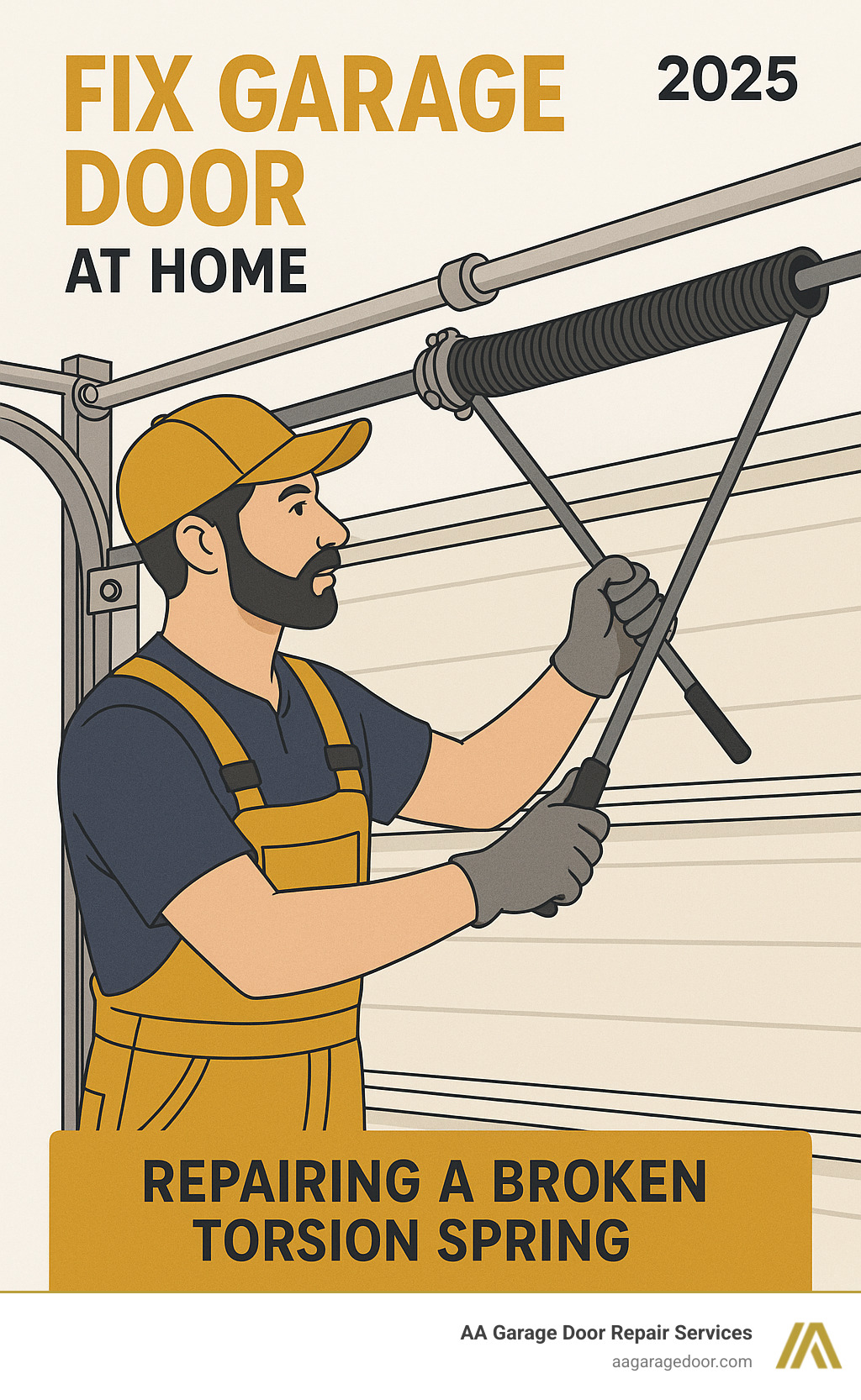
Call a professional immediately for these issues:
- Broken Springs: Torsion and extension springs are under extreme tension and can cause severe injury if they break or are mishandled. A loud bang from the garage is a common sign of a broken spring.
- Frayed or Snapped Cables: Like springs, cables are under high tension. A snapping cable can be dangerous, and a broken one can cause the door to fall.
- Severely Bent Tracks: Major track damage can compromise the door’s structural integrity and cause it to derail.
- Opener Motor Failure: Internal issues like grinding gears or circuit board failures require specialized tools and knowledge.
- Damaged Door Sections: Replacing panels affects the door’s balance and requires precise installation to avoid straining the entire system.
The average professional repair costs between $148 and $341. While DIY seems cheaper, a professional repair guarantees safety and often includes a warranty.
For residents throughout the Twin Cities area, our experienced technicians are available 24/7 for all types of garage door emergencies. There’s no shame in calling for help; your safety is worth more than any DIY savings.
Frequently Asked Questions about Home Garage Door Repair
As you learn to fix garage door at home, you’ll likely have questions. Here are answers to some of the most common ones we hear from homeowners.
How do I manually open my garage door if the power is out?
First, ensure the door is fully closed for safety. Locate the red emergency release cord hanging from the opener rail. Pull the cord down and back (towards the door) to disengage the opener. You can now lift the door by hand. Be prepared for the weight and lift with your legs. If the door feels extremely heavy or won’t stay open, you may have a broken spring and should call a professional.
How much does it cost to fix a garage door?
Costs vary widely based on the issue.
- DIY Repairs: Simple fixes like lubrication or sensor adjustments often cost less than $50 for supplies.
- Professional Repairs: The national average is around $243, with most common repairs falling between $148 and $341. A simple adjustment will be on the lower end, while a spring replacement will cost more.
Why does my garage door reverse after hitting the floor?
This common issue is usually caused by the opener’s safety settings. The opener’s “close force” or “down limit” is set too sensitively, causing it to think the floor is an obstruction and reverse. Consult your owner’s manual to make small, incremental adjustments to these settings. Test the door after each adjustment. If you’re not comfortable or the problem persists, call a professional, as incorrect settings can be a safety hazard.
Keep Your Garage Door Rolling Smoothly
Regular maintenance is the best way to prevent major garage door problems. By learning to fix garage door at home, you can catch many issues early with simple, preventive care. Consistent monthly checks—like cleaning sensors, lubricating parts, and tightening hardware—can save you from costly repairs and extend the life of your door.
Set a reminder to inspect your door each month. Listen for new noises and watch for jerky movements to catch problems before they escalate. A well-maintained door is not just convenient; it’s essential for your home’s security and energy efficiency.
Most importantly, always put safety first. While this guide empowers you to handle many common repairs, it’s crucial to recognize when a job is too risky. Never hesitate to call a professional when you’re dealing with high-tension components or complex motor issues.
For residents in the Twin Cities area, AA Garage Door Repair Services is available 24/7 for any emergency. We understand that problems don’t wait for business hours, and our team is always ready to get your door running safely and smoothly again.

